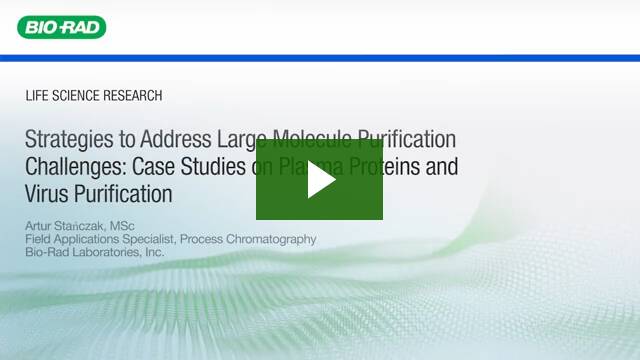Large molecule purification presents significant challenges due to their considerable size. For instance, Immunoglobulin M (IgM) molecules, ranging from 900 to 1,000 kD, play pivotal roles in mammalian immune responses and find extensive applications in diagnostics and therapeutics. Purification of such molecules is particularly intricate owing to several factors including their weak Protein A binding sites, limited dynamic binding capacity, and slow diffusion rates.
This webinar delves into innovative strategies to surmount these challenges, employing design of experiments (DOE) methodologies and offering insightful case studies centered around plasma protein and virus purification. These real-world applications showcase tangible enhancements in productivity and overall process economics within large molecule purification.
Key takeaways:
- Slow diffusion in traditional chromatography resins affects binding capacity and resolution
- Highlight DOE and case studies on plasma protein and virus purification
- Advanced chromatography resins enhance efficiency and productivity in large molecule purification
- Optimized mass transfer kinetics improve binding capacities, resolution, and processing time
Strategies to Address Large Molecule Purification Challenges


